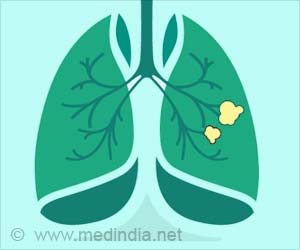Optical tool in many smartphones found effective at assessing blood-oxygen levels and could be used to identify persons with worsening respiratory function.

‘Optical tool in many smartphones found effective at assessing blood-oxygen levels and could be used to identify persons with worsening respiratory function
’





In a study published online in the issue of Chest, researchers at University of California San Diego School of Medicine, with industry collaborators, found that already embedded PPG in smartphones, in tandem with application software, could be used for remote clinical pulse oximetry to manage chronic cardiopulmonary disease and perhaps initial treatment and monitoring of persons affected in respiratory viral pandemics, such as COVID-19."Pulse oximetry monitoring plays an important role in managing pulmonary diseases, especially during pandemics or epidemics of respiratory viral infections, such as COVID-19 and influenza," said the study's first author Sara H. Browne, MD, an associate professor in the UC San Diego School of Medicine and an infectious disease specialist.
Oxygen saturation is a valuable component of the clinical evaluation used to differentiate those that require close monitoring. In circumstances of home quarantine, remote clinical pulse oximetry allows patients to objectively report oxygen saturation and heart rate in addition to their symptoms. Smartphone sensors with apps could facilitate access to these measurements, but to be utilized clinicians must know that these measurements are accurate and reliable.
Browne also noted there are health equity aspects in remote monitoring.
"Smartphones with sensors and apps could significantly enhance remote monitoring due to their ubiquity, and don't require patients to have additional expensive gadgets."
Advertisement
In their study, researchers recruited 10 volunteers (three Caucasian, three Black and four Asian), each placed an index finger over a smartphone sensor system with an app designed to clinically interpret the resulting optical data.
Advertisement
Then, using the same smartphone, the researchers analyzed more than 2,200 readings taken simultaneously from smartphone pulse oximetry and in-hospital Welch-Allyn instruments in 320 study participants, ages 18 to 89, and representing a broad range of racial and ethnic backgrounds. They found that the smartphone readings had equivalent measurement accuracy and precision to the expensive FDA-approved hospital instruments.
Source-Eurekalert











